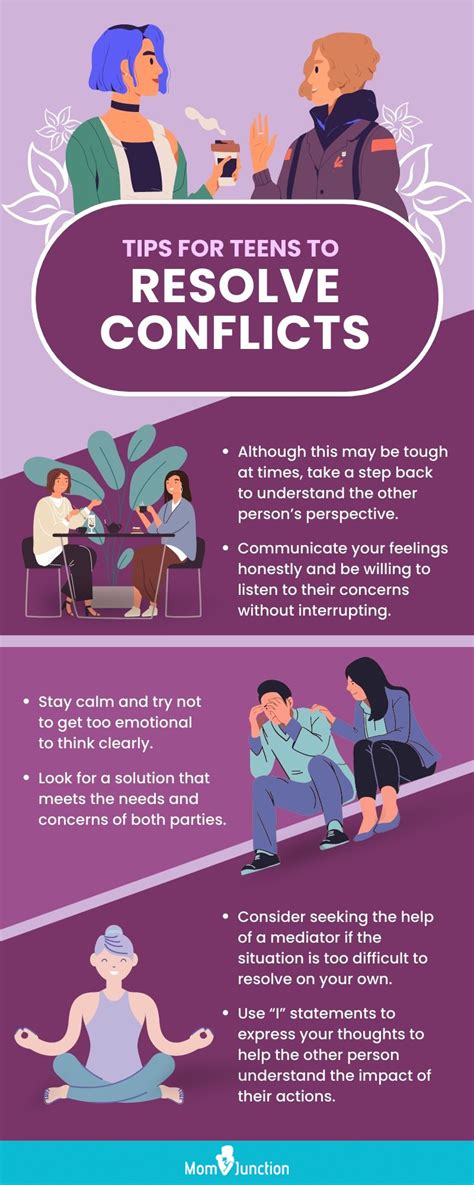Conflict Resolution: How to Coach Your Teenager to Handle Disagreements
Teenage years are a whirlwind of emotional growth, independence, and, inevitably, conflict. Learning to navigate disagreements is a crucial life skill, and as a parent, you play a vital role in coaching your teenager to become a skilled conflict resolver. This isn't about eliminating disagreements—it's about equipping them with the tools to handle them effectively and maturely. This article will provide practical strategies and insights to help you guide your teen through the challenges of conflict resolution.
Understanding the Root of the Conflict
Before diving into strategies, it's essential to understand why conflicts arise. Teenagers are grappling with identity, autonomy, and a rapidly changing social landscape. Conflicts often stem from:
- Misunderstandings: Simple miscommunication can escalate into major disagreements.
- Differing Opinions: Teenagers are developing their own perspectives and values, leading to clashes with parents or peers.
- Power Struggles: The desire for independence can trigger conflicts over rules, curfews, and responsibilities.
- Emotional Regulation: Teen brains are still developing, making it harder to manage emotions in tense situations.
Addressing the root cause is crucial for effective conflict resolution. Simply punishing a teen for their behavior might not resolve the underlying issue.
How to Help Your Teenager Resolve Conflicts
Here are some practical strategies to teach your teen about conflict resolution:
1. Active Listening: Hearing and Understanding
H2: How can I teach my teenager to actively listen?
Active listening is the cornerstone of conflict resolution. It involves truly hearing what the other person is saying, understanding their perspective, and showing empathy. Teach your teenager to:
- Focus on the speaker: Put away distractions and give the speaker their full attention.
- Summarize and paraphrase: "So, if I understand correctly, you're saying..." This ensures understanding and shows the speaker you're engaged.
- Ask clarifying questions: Don't interrupt, but ask thoughtful questions to understand the other person's feelings and reasoning.
- Reflect emotions: Acknowledge the speaker's feelings. "It sounds like you're feeling frustrated."
Practice this skill together. Role-play scenarios where one person expresses a grievance, and the other practices active listening.
2. Identifying Feelings and Needs
H2: How do I help my teen identify their emotions during a conflict?
Before addressing a conflict, it's vital to identify the underlying emotions and needs driving the disagreement. Help your teenager:
- Name their feelings: Encourage them to identify their emotions (e.g., anger, frustration, sadness). A feelings chart can be a helpful visual tool.
- Understand their needs: What are they hoping to achieve? What unmet needs might be contributing to the conflict?
Once feelings and needs are identified, it becomes easier to approach the conflict constructively.
3. Expressing Needs Assertively, Not Aggressively
H2: What's the difference between assertive and aggressive communication?
Teaching assertive communication is vital. Assertiveness means expressing needs and opinions respectfully without being aggressive or passive. Help your teenager learn to:
- Use "I" statements: "I feel hurt when..." instead of "You always..."
- Stay calm and respectful: Even when frustrated, maintain a calm tone and respectful language.
- Focus on the issue, not the person: Address the specific problem, avoiding personal attacks.
Aggressive communication escalates conflict, while passive communication allows resentment to build. Assertiveness finds the healthy middle ground.
4. Finding Common Ground and Compromising
H2: How can my teen learn to compromise effectively?
Compromise is often necessary in conflict resolution. It doesn't mean one person wins and the other loses. It means finding a solution that satisfies both parties' needs, even if it's not perfect. Help your teen:
- Brainstorm solutions together: Generate multiple options before settling on a solution.
- Evaluate the pros and cons of each option: Weigh the advantages and disadvantages of each potential solution.
- Be willing to give and take: Compromise requires flexibility and a willingness to concede some points.
5. Seeking Mediation When Needed
H2: When should I get involved in my teenager's conflicts?
Sometimes, teenagers need help resolving conflicts independently. Offer to mediate if they are struggling to find a solution. Your role as a mediator is to:
- Facilitate communication: Create a safe space for open and honest dialogue.
- Remain neutral: Avoid taking sides or expressing your own opinions.
- Guide them to a solution: Help them brainstorm solutions and reach an agreement.
However, avoid intervening unless absolutely necessary, allowing your teen to develop their problem-solving skills.
Building Conflict Resolution Skills Over Time
Learning conflict resolution is a process, not a one-time event. Continue practicing these strategies with your teen, offering support and guidance as needed. Celebrate their successes, and gently correct their mistakes. Remember, patience and consistency are key to helping your teenager develop these crucial life skills. By empowering them with the tools to handle disagreements effectively, you are equipping them for a more successful and fulfilling future.

